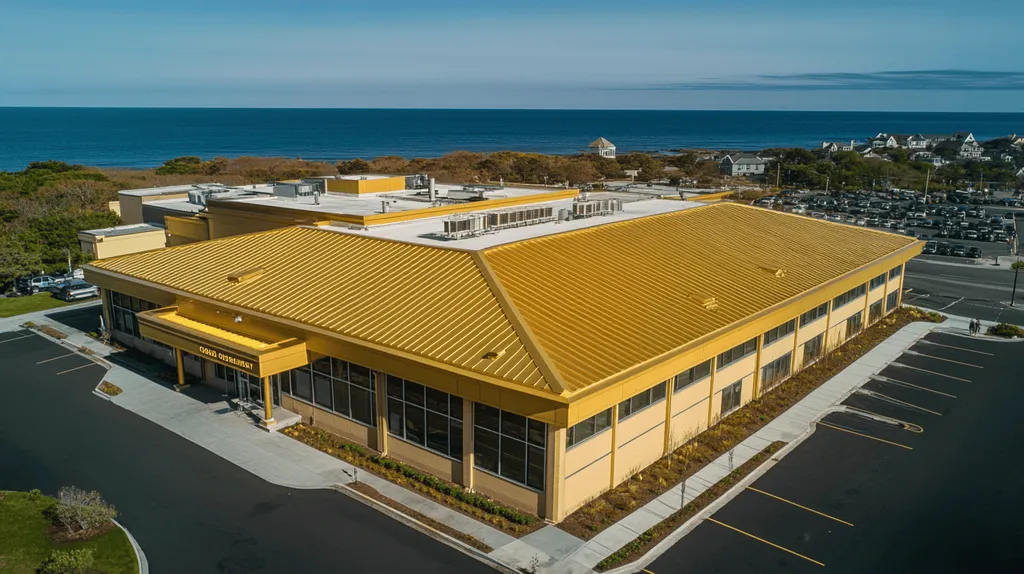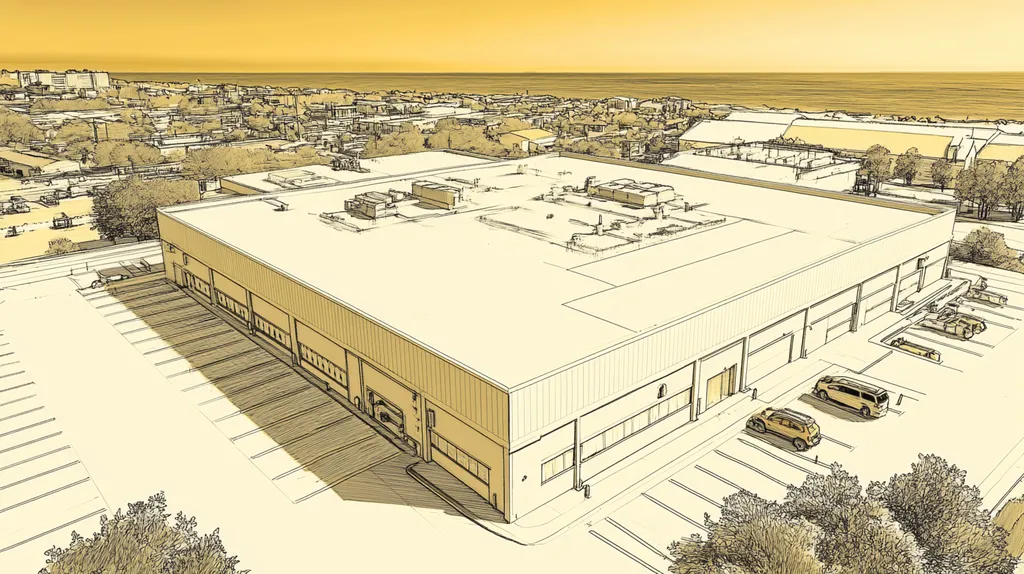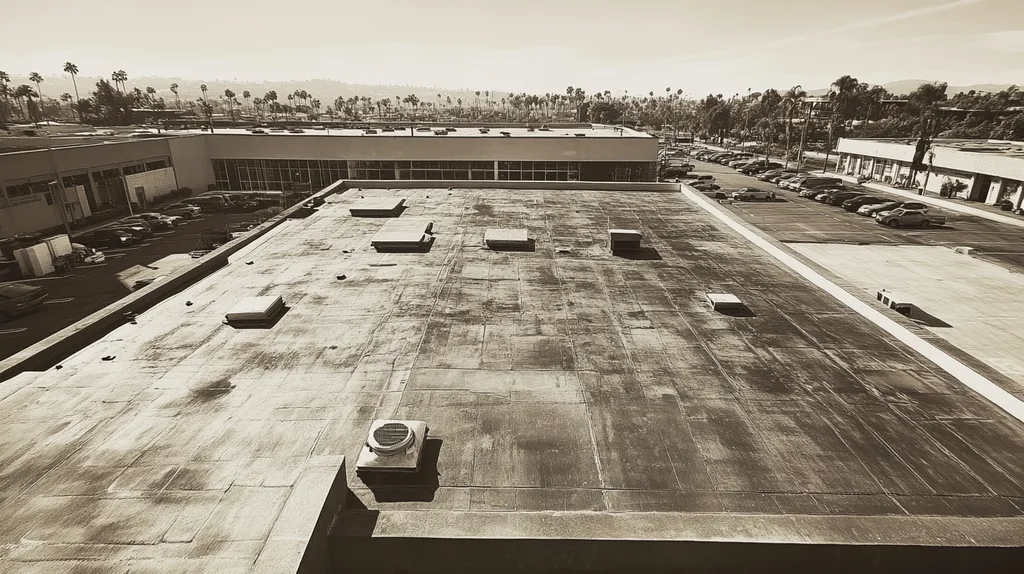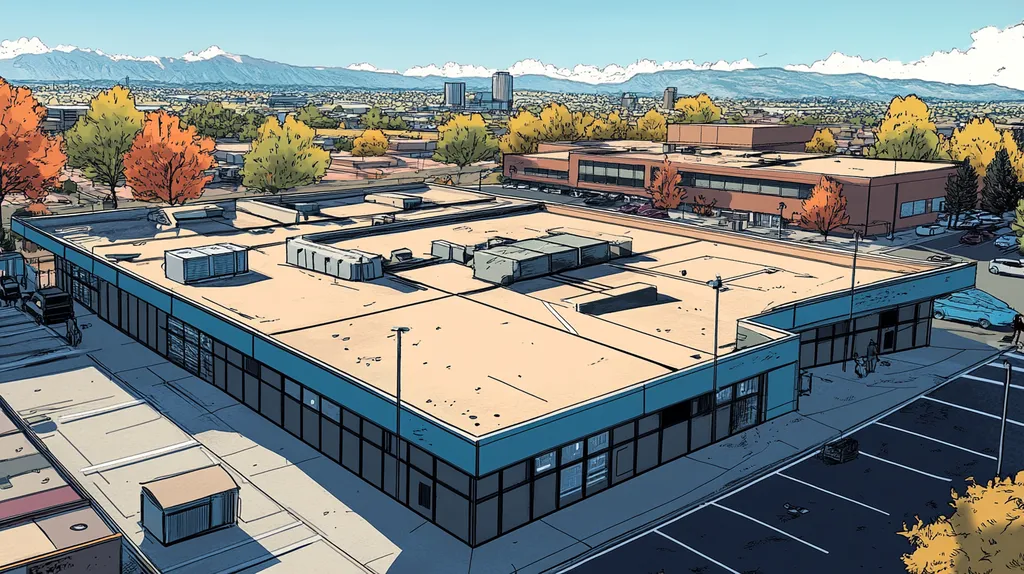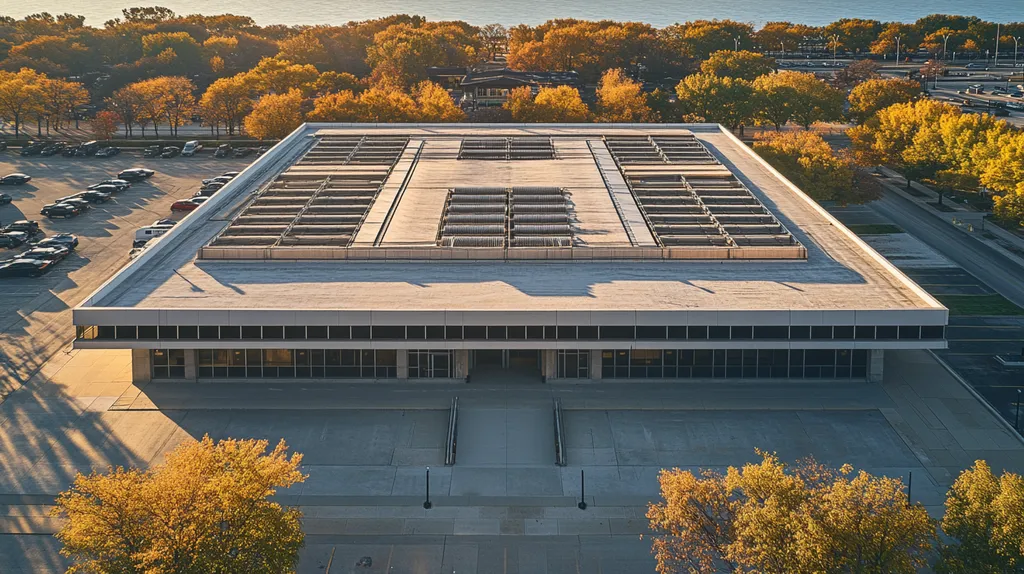When a commercial roof permit gets denied, the domino effect can be catastrophic – construction delays that cost thousands per day, violated tenant agreements, and compromised building safety. In fact, permit-related delays impact over 30% of commercial roofing projects nationwide.
Understanding how to successfully appeal these decisions has become a crucial skill for property owners and facility managers. The process involves navigating complex building codes, preparing compelling documentation, and effectively presenting technical arguments to review boards.
This comprehensive guide breaks down the critical factors that influence appeal outcomes, from proper documentation to timing considerations, helping ensure your roofing project stays on track and compliant.
SECTION 1: THE BASICS EXPLAINED
Navigating the roofing permit process can feel like climbing a steep slope, especially for commercial property owners. When a roofing project faces a denial, the consequences can escalate rapidly—think delays, soaring costs, and potential safety hazards. Gaining a clear understanding of the appeal process for denied roof permits is not just helpful; it’s essential for keeping projects on track. This section will break down what a permit appeal is, why it matters, and how the process unfolds.
What It Is (In Plain Language)
A roof permit appeal is a formal request to challenge a denied roofing permit. When a property owner proposes new roofing plans, local authorities scrutinize those plans against building codes and regulations. If the plans don’t pass muster, a permit denial follows. The appeal process gives the owner a chance to present their case legally and seek a remedy.
For commercial property owners, understanding this process can be a game changer. Permit denials can trigger expensive delays and prolong project timelines. An appeal may require resubmitting documents or even attending hearings to clarify the reasoning behind the plans. The specifics of this process differ across jurisdictions, highlighting the importance of knowing local regulations.
Many areas allow for an appeal process that ensures property owners can advocate for their roofing projects. This phase can also yield valuable feedback to refine future submissions, leading to successful outcomes. It serves as a pivotal step toward aligning with local building codes and requirements, making it crucial for property owners to prepare compelling cases during their appeals.
Why It Matters (To Your Building)
Timely roofing projects are vital for maintaining the structural integrity of commercial properties. A denied permit can have serious repercussions, including water damage or compliance headaches. The appeal process is an opportunity for property owners to address any concerns raised during the preliminary review.
A successful appeal can pave the way for essential repairs or upgrades that prolong the life of a commercial roof, which can significantly enhance property value. Properties in compliance with current standards not only retain their appeal but often enjoy reduced utility costs and improved energy efficiency.
Moreover, roof permits are crucial for ensuring that construction meets safety standards. Poorly executed roofing can pose serious risks, not just to the structure but also to the lives of its occupants. Thus, appealing a denied permit is not simply about compliance; it’s about ensuring safety and longevity.
Ultimately, grasping the stakes involved in the roof permit appeal process empowers property owners to take proactive steps in securing their projects. Delaying an appeal can lead to wasted time and money, making it essential to act promptly and decisively.
How It Works
The roof permit appeals process typically begins with a thorough review of the reasons behind the denial. Property owners should gather any documentation detailing the permit’s rejection. A well-prepared appeal leverages an understanding of the criteria that led to the denial and strengthens the argument.
Most jurisdictions require a formal submission that outlines compliance with local building codes. This may involve consulting roofing professionals for necessary support and documentation. A well-articulated presentation of the rationale, supported by expert opinions, can significantly impact the outcome.
In some instances, property owners may need to attend a hearing where they will present their case before a panel. Having visual aids, project plans, and supporting evidence prepared can bolster their position. Engaging a roofing consultant or legal advocate can also elevate the chances of a successful appeal.
Once the case is presented, property owners will receive a written decision on their appeal. If the appeal is approved, it might come with additional conditions or modifications to the original plans. Thus, maintaining open lines of communication with local authorities remains crucial throughout the appeal process, ensuring all aspects align with regulatory expectations.
SECTION 2: PRACTICAL APPLICATIONS
Understanding the appeal process for commercial roofing permits is not just beneficial; it’s crucial for property owners and facility managers. A delay in permit approvals can lead to costly work stoppages and extended project timelines. In fact, permit delays impacted a staggering 30% of roofing projects nationwide in 2022, underscoring the importance of mastering this process. This section will delve into common scenarios for appeals, pivotal moments when intervention is necessary, and the interconnectedness of these appeals with broader project systems.
Common Uses & Examples
Roof permit appeals frequently emerge when initial applications are denied due to compliance issues or misunderstandings of regulatory requirements. In bustling urban areas, where zoning laws can resemble a complex maze, property owners often encounter obstacles that necessitate an appeal. For instance, a warehouse owner in a vibrant city might find their permit mired in delays due to unforeseen noise ordinance setbacks during construction.
Another prevalent scenario involves appeals for roofing materials that don’t quite fit local codes. A facility manager eager to incorporate energy-efficient green roofing might discover that the chosen materials exceed current standards, forcing them to embark on the appeal process to demonstrate compliance and advocate for exceptions.
In cases where contractors lack familiarity with local regulations, appeals become essential in moving projects forward. Recognizing these typical scenarios aids in preparedness, empowering property owners to strategize and tackle challenges head-on.
When You Need It Most
Certain critical moments indicate when an appeal is indispensable. If a government entity denies a permit based on safety concerns, swift action is essential to prevent project delays. The implications of prolonged appeals can lead to significant downtime and potential revenue losses.
Moreover, appeals become vital when new regulations crop up after an application has been submitted. Take, for example, the implementation of a new stormwater management policy that necessitates design modifications before project approval. This highlights the importance of being vigilant about regulatory changes that could influence roofing endeavors.
By pinpointing these high-stakes situations, property owners can expedite processes, ensuring project timelines stay intact and operational integrity is maintained.
Interactions With Other Systems
The roof permit appeal process interacts closely with other project systems, including architectural designs, financing, and contractor workflows. Delays within the appeals process can throw a wrench in the coordination among teams. For example, if a contractor is unable to commence roofing installations due to a pending permit appeal, the entire construction schedule may grind to a halt.
Additionally, the appeal process can affect financing arrangements, especially if lenders require completed documentation as part of their funding approval. Any delay in the project could lead to increased financing costs, consequently impacting overall budgets.
Grasping these interdependencies helps property owners anticipate how permit appeals may influence project timelines and expenses, paving the way for smoother operations and minimized risks.
SECTION 3: KEY TERMINOLOGY DECODED
Grasping the lingo of roofing is not merely a nice-to-have; it’s a necessity for navigating the often-tumultuous waters of permit appeals. Essential terms can make or break a project, influencing everything from compliance to communication with regulatory bodies. A simple misunderstanding can snowball into costly delays or compliance headaches. By familiarizing themselves with the right terminology, property owners can arm themselves with knowledge, ensuring their roofing projects stay on the right track and aligned with goals.
Essential Terms Explained
Terms such as “building codes,” “zoning regulations,” and “as-built drawings” lay the groundwork for successful roofing projects. Building codes are the safety and quality standards that every roof must meet to stand the test of time. Meanwhile, zoning regulations specify where and how properties can be designed or remodeled, playing a crucial role in ensuring a project is legally compliant. As-built drawings depict the project as it was actually constructed, a key resource for any future evaluations or modifications.
Understanding these definitions is vital. If a project fails to comply with building codes, it can be irrevocably stalled. A misinterpretation of zoning regulations can inadvertently invite additional costs or even lead to complete denials. Property owners who take the time to engage with these terms can effectively protect their investments and steering clear of unnecessary hurdles.
Industry Jargon Translated
The roofing industry is filled with jargon that can sound bewildering. Words like “flashing,” “drainage,” and “thermal performance” often pop up but can lead to confusion if not clearly understood. Flashing refers to the materials used to channel water away from vulnerable areas of the roof, while proper drainage systems are essential to preventing water accumulation that could lead to leaks. Meanwhile, thermal performance measures how effectively a roofing system insulates, helping to keep energy costs in check.
Disregarding the significance of these terms could spell disaster for a project. For instance, incorrect flashing installation increases the risk of leaks, while inadequate drainage can spell structural trouble down the line. Thus, having a grasp on this specialized vocabulary is not just beneficial; it’s vital for managing projects efficiently.
Measurement & Units Simplified
The world of roofing also demands a solid understanding of measurements and units, which are critical for accurate project planning. Terms like “square footage,” “pitch,” and “R-value” need to be recognized and respected. Square footage quantifies the total roofing area requiring materials, pitch describes the roof’s slope, and R-value indicates the thermal resistance or insulating effectiveness of roofing material.
Misunderstandings in these measurements can lead to significant miscalculations during the permit process. An erroneous estimation of square footage can result in ordering too little or too much material, wreaking havoc on budgets and project timelines. Similarly, underestimating R-value can compromise a building’s energy efficiency and subsequently inflate operating costs.
By honing in on these essential units, property owners can positively impact project costs and sustainability. Mastering these metrics lays the groundwork for smoother appeals, aligning roofing ambitions with regulatory demands.
SECTION 4: DECISION FACTORS
When it comes to appealing a denied commercial roof permit, grasping the key decision factors is essential. Miscalculating costs, overlooking performance expectations, or underestimating durability can lead to significant setbacks, time delays, and unwanted expenses. For instance, a hasty choice of roofing material might inflate project costs by over 20%. This section sheds light on vital decision factors: cost considerations, performance trade-offs, and the all-important lifespan and durability of roofing systems.
Cost Considerations
Cost is often the first thing on a property owner’s mind when tackling a roof permit appeal. With roofing projects being substantial financial undertakings, each decision has a ripple effect on the overall budget. For instance, opting for a top-tier roofing material might spike initial costs but can yield considerable long-term savings on maintenance and energy efficiency.
A comprehensive understanding of the total cost of ownership is crucial. This includes installation, maintenance, and potential repairs down the line. Thoroughly assessing every financial angle allows property owners to project overall expenses more accurately, strengthening their appeal with persuasive financial arguments.
Furthermore, analyzing cost projections against anticipated energy savings can unveil hidden benefits of more efficient systems. This dual approach not only supports the appeal but also aligns fiscal objectives with environmentally friendly practices, fostering a win-win outcome.
By prioritizing careful cost evaluations, property owners can make informed decisions, sidestepping the pitfalls of unexpected financial overruns. This clarity arms them with the insights needed to convincingly present their case during the appeal process.
Performance Trade-offs
Performance factors play a pivotal role in the roofing equation. The ability of a roofing material to withstand local weather extremes directly impacts its effectiveness and longevity. For instance, in storm-prone regions, investing in a roof that can brave hurricanes or heavy snowfall may entail higher upfront costs but ensures better protection in the long run.
It’s crucial to articulate performance trade-offs clearly in appeals. Property owners must demonstrate how their chosen roofing systems meet or surpass building codes and safety standards. Systems that underperform in adverse conditions can result in structural damage, costly repairs, and safety hazards.
Ongoing performance evaluation is equally important. A property with frequent roof repairs will likely experience increased downtime and operational disruptions, affecting overall efficiency. Presenting robust data on long-term performance reliability can significantly strengthen arguments in favor of the appeal.
In the end, a meticulously conducted performance analysis enhances the persuasiveness of permit appeals, ensuring that initial costs align with lasting viability.
Lifespan & Durability Factors
Lifespan and durability are critical considerations that can’t be overlooked. Choosing roofing materials with a proven track record is key to minimizing future complications. For example, EPDM rubber roofs boast lifespans of over 20 years, making them a reassuring option for property owners looking to make long-term investments.
Evaluating a roofing system’s resistance to environmental stressors is essential. Materials with poor durability can lead to leaks and structural integrity issues, necessitating costly repairs and exacerbating operational disruptions. The lifespan of a roof greatly influences total lifecycle costs, affecting overall project financing.
Incorporating warranty details and performance history into appeal submissions can bolster credibility. By showcasing expected lifespans backed by proven performance, property owners can further reinforce their position. Clear documentation serves to illustrate longevity and mitigate potential risk factors, making it a crucial element in the appeal.
Ultimately, a solid understanding of lifespan and durability factors empowers property owners to advocate for the right roofing solutions. Choosing durable materials not only enhances protection but also reduces long-term costs, significantly improving the odds of permit approval.
SECTION 5: COMMON CHALLENGES
Navigating the commercial roof permit appeal process can feel like a high-stakes game of chess, where a single misstep may jeopardize project timelines and budgets. With over 30% of permit applications stalling due to common pitfalls, it’s imperative for property owners to identify and tackle these challenges early on. This section will spotlight common issues, highlight warning signs, and propose preventative measures that can lead to smoother permit outcomes.
Frequent Problems & Solutions
One of the most significant hurdles in roof permit appeals is submitting incomplete or inaccurate applications. Property owners frequently miss essential documentation, which can derrail approval timelines. To streamline the approval process, ensuring that every required document is meticulously collected and submitted is crucial.
Miscommunication with local authorities is another prevalent challenge. Each jurisdiction has unique building codes that can vary widely. Engaging early on with local building departments can clarify these specific criteria and significantly reduce the risk of misunderstandings.
A lack of compelling justification for design changes or material choices can also prevent permits from being approved. Presenting well-documented explanations that align with existing building regulations can greatly enhance the chances of a successful appeal.
By anticipating these challenges and conducting thorough checks, property owners can significantly bolster their chances of navigating the permit appeal process successfully.
Warning Signs To Watch For
Keeping an eye out for early warning signs can alert property owners to potential hurdles in the permit appeal process. A sudden shift in local property regulations is a significant indicator that something may be amiss. Regularly monitoring updates from local government can help owners stay ahead of changes that could impact their projects.
An unusually lengthy approval process is another red flag. If a permit application sits idle without explanation, it might indicate underlying issues requiring resolution. Escalating inquiries can help identify these challenges before they become entrenched.
Conflicting feedback from different city departments can signal a breakdown in communication regarding project requirements. Seeking clarification from the appropriate authorities can help resolve discrepancies and get projects back on track.
By recognizing these warning signs, property owners can proactively address problems and avoid more significant delays down the road.
Preventative Approaches
Proactively implementing preventative measures is essential for sidestepping common challenges in the roof permit appeal process. Conducting a pre-application meeting with local building officials is an effective way to clarify requirements and ensure smoother future submissions.
Training staff on local building codes and permit processes also enhances compliance, reducing the likelihood of errors in submissions. Knowledgeable teams make it less likely that essential documentation will be overlooked.
Building a solid rapport with local authorities facilitates open lines of communication. This relationship can expedite issue resolution during the appeal process, helping projects stay on schedule.
Moreover, routinely reviewing submissions before finalizing them can help operators eliminate oversight and enhance documentation quality. With these proactive measures in place, property owners can confidently navigate the complexities of the permit appeal process.
SECTION 6: NEXT STEPS & RESOURCES
The stakes surrounding roof permit appeals are high. A denied permit can trigger costly delays, spiraling project budgets, and even legal disputes. With around 25% of commercial roofing projects facing permit hurdles, it’s crucial to understand the next steps that can influence a successful appeal. Knowing what questions to ask providers, adhering to industry standards, and seeking further learning can set the stage for a positive outcome.
Questions To Ask Providers
Property owners must engage meaningfully with roofing providers to navigate the permit appeal landscape. Start by asking: What specific documentation is required for the permit appeal? Understanding this step not only clarifies the process but also showcases the provider’s expertise.
It’s equally important to inquire about their experience with local codes and regulations. Each locale has its own set of requirements, and a knowledgeable provider can efficiently guide you through these nuances. Additionally, asking about their history with appeal processes can provide valuable insights into their rates of success.
Lastly, don’t forget to discuss timelines. Grasping how long an appeal might take is essential for planning, helping to avoid stagnation in projects. This proactive dialogue establishes a more organized and predictable roofing venture.
Industry Standards & Guidelines
Adhering to industry standards is vital in the roof permit appeal process. Organizations such as the National Roofing Contractors Association (NRCA) offer guidelines that play a critical role in compliance. Familiarizing oneself with these standards can significantly enhance the chances of a successful appeal.
These standards also serve as benchmarks for quality and safety. Property owners should ensure their roofing contractors align with these established practices, reducing the likelihood of permit denials. Incorporating any relevant local building codes or zoning laws into the equation is equally beneficial, as municipalities often have unique requirements.
Being well-informed about these regulations can greatly increase the success rate of an appeal, so it’s worth the time to research thoroughly.
Further Learning Simplified
Continued education is crucial for effective roofing management. Numerous online resources are available for those wanting to deepen their understanding of roof permit appeals. Websites like the NRCA provide free articles, webinars, and white papers covering various relevant topics.
In addition, attending industry conferences and workshops offers firsthand insights into best practices and peer networking opportunities. Such interactions can lead to valuable information regarding successful appeal strategies from others who have navigated similar challenges.
Lastly, consider subscribing to industry publications. These often feature case studies and expert insights, keeping property managers up to date with recent trends and developments. Staying informed is key to mastering the complexities of permit appeals.
The Bottom Line
With permit denials affecting up to 30% of commercial roofing projects and costing businesses millions in delays annually, mastering the appeals process has become a critical survival skill.
Success hinges on understanding local building codes, maintaining meticulous documentation, and effectively presenting technical arguments to review boards.
Property owners who invest time in learning the terminology, anticipating common challenges, and building relationships with local authorities position themselves for significantly better outcomes.
Remember: a denied permit isn’t just paperwork – it’s a direct threat to building safety, tenant satisfaction, and the bottom line.
By following the strategies outlined in this guide, facility managers can transform the daunting permit appeal process into a manageable, strategic advantage for their roofing projects.
FREQUENTLY ASKED QUESTIONS
Q. What is a commercial roof permit appeal?
A. A commercial roof permit appeal is a formal request to challenge a permit denial. When local authorities deny roofing plans, this process allows property owners to present their case. Grasping this procedure can help avoid costly delays and align roofing projects with local codes.
Q. When should a commercial roof permit appeal be filed?
A. A commercial roof permit appeal should be filed immediately after a denial. Delays can lead to financial losses and extended project timelines. Addressing reasons for denial swiftly helps maintain momentum and minimizes disruptions to project completion.
Q. What documentation is needed for a roof permit appeal?
A. Critical documentation includes the original permit application, denial letter, and any relevant plans. It’s essential to gather evidence that supports compliance with local codes. Well-prepared submissions can strengthen the case and facilitate a quicker approval during the appeal process.
Q. How can property owners avoid common permit appeal obstacles?
A. To avoid obstacles, ensure all application materials are complete and accurate. Early communication with local authorities can clarify requirements. Additionally, maintaining a good relationship with officials can help resolve conflicts and streamline the approval process, thus avoiding common pitfalls.
Q. What are the key decision factors for a successful roof permit appeal?
A. Key factors include cost assessments, material performance, and durability ratings. Making informed choices about roofing materials can impact the overall project budget and lifespan. Clearly articulating these points in appeals strengthens the argument and demonstrates thorough planning.
Q. How does staying up to date with regulations help in the appeal process?
A. Staying updated ensures compliance with local codes, avoiding unnecessary denials. Changes in regulations can impact project designs and timelines. Regularly checking for updates helps property owners adapt quickly, ensuring their appeals are timely and relevant, thus increasing chances of success.
Q. What specific risks arise from poorly handled roof permit appeals?
A. Poorly handled appeals can result in project delays, increased costs, and even legal disputes. Missteps can jeopardize timelines, causing significant financial strain. Ultimately, failure to navigate the process effectively puts both the project and the property at considerable risk.

